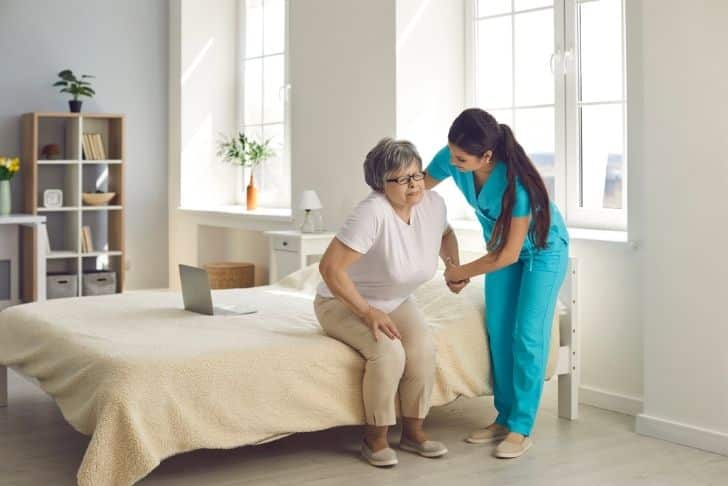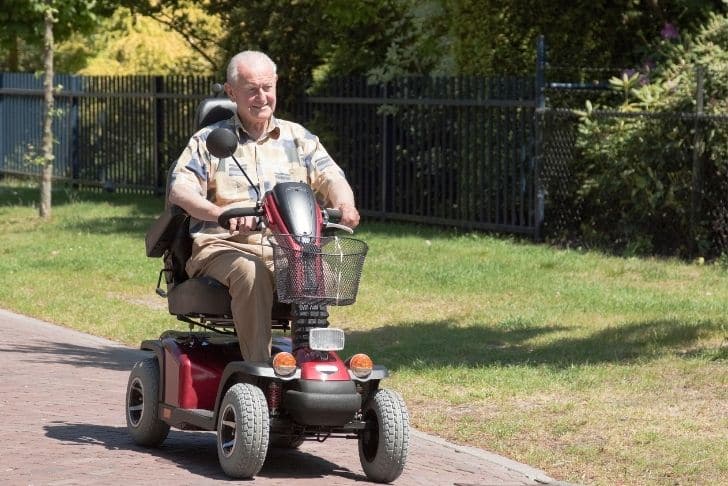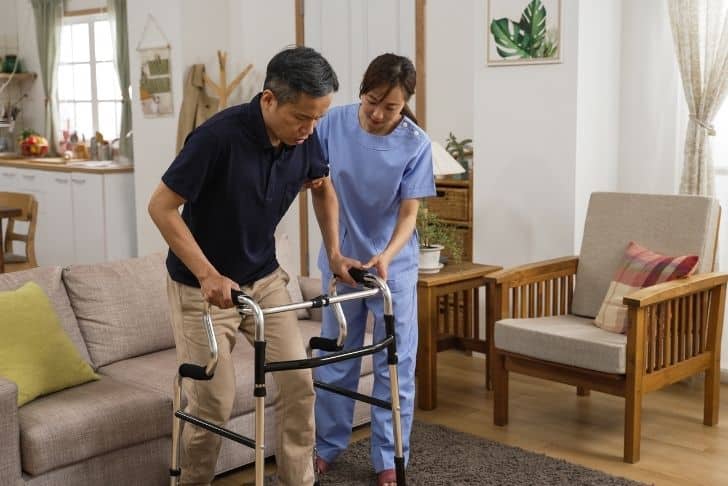“Overcoming Physical Limitations: The Benefits of Mobility Aids” centers around the life-enhancing gifts provided by a range of devices designed to aid mobility. These practical tools, from canes and crutches to wheelchairs and guide dogs, serve to promote independence and confidence while easing pain for those facing motion issues due to disabilities, injuries, or advancing age. However, alongside these benefits, the article also cautions on potential hazards of improper usage, emphasizing the importance of learning correct handling techniques from qualified health professionals. For a more customized solution, home and office safety modifications are suggested, underpinning an inclusive ethos that believes everyone, regardless of their physical conditions, deserves freedom of movement.
Understanding Mobility Aids
Definition of mobility aids
Mobility aids are devices specially designed to assist individuals who face challenges moving around. These tools provide these individuals with greater freedom and ability to navigate their environment. They help to supplement or substitute for lost or decreased physical function, thereby promoting independence and improving quality of life.
Who uses mobility aids?
Mobility aids are often used by individuals with disabilities, injuries, or health conditions that inhibit their regular movement. These can be individuals who were born with a physical disability, those who have acquired one through an accident or ill health, or older adults who are at risk of falling due to age-related physical deterioration.
Types of mobility aids
There is a broad spectrum of mobility aids that cater to the varying needs and functionalities of the individuals using them. Some of the common types include canes, crutches, walkers, wheelchairs, mobility scooters, and guide dogs. Each of these aids serves a specific purpose and tends to cater to a specific set of needs, depending on the physical abilities of the user.
Benefits of Mobility Aids
Improvement of Independence
One of the main benefits of mobility aids is the enhancement of independence. By using these tools, individuals can complete their daily tasks and go about their daily activities with less dependence on others. This could be as simple as being able to move around one’s own home, or it could extend to wider-ranging independence such as running errands or participating in social activities outside the home.
Reduction of Pain
Mobility aids can also contribute to a significant reduction of pain. For individuals who experience discomfort when walking or standing due to weight-bearing on affected limbs, mobility aids help distribute the body’s weight, mitigating pain.
Boosting Confidence and Self-esteem
Having a level of independence can help to boost an individual’s confidence and self-esteem. Mobility aids can create a sense of empowerment, enabling individuals to take control of their lives and be less reliant on others for their mobility. This psychological boost can be as important as the physical support provided by the aids.

Exploring Different Types of Mobility Aids
Canes & Their Uses
Canes are simple mobility aids that are typically used to provide additional support and balance. They aid in distributing the body’s weight, placing less strain on the lower limbs. However, they can put some pressure on the hands and wrists and are best suited to individuals who still maintain some level of balance and lower-body strength.
Crutches & Their Uses
Crutches are typically used singularly or in pairs to transfer weight from the legs to the upper body. They are often used by individuals with a temporary disability, such as a broken limb, but can also benefit those with long-term mobility issues.
Walkers & Their Uses
Also known as Zimmer frames, walkers are typically used for stability and support, typically when the user has significantly weakened balance or lower-body strength. They consist of a metal framework with four legs, providing a large base of support to aid in mobility.
Wheelchairs & Their Uses
wheelchairs cater to individuals who cannot put weight on their lower limbs or are unable to walk. They range widely in their designs, with manual and electric versions available to cater to different degrees of physical abilities.
Mobility Scooters & Their Uses
Mobility scooters are similar to wheelchairs but are designed with a seat set on a number of wheels, controlled with handlebars or a steering wheel. They are typically power-operated and offer greater mobility over longer distances.
Guide Dogs & Their Uses
Guide dogs are trained service animals used to escort individuals with visual impairment. These dogs are trained to help navigate various obstacles, providing safe mobility for the visually impaired individuals.
Mobility Aid Options: An Overview
Choosing the Right Mobility Aid
The choice of mobility aid depends on the requirements of the individual, which can be influenced by their physical abilities, lifestyle, and personal preference. It is important for individuals to discuss with their healthcare professionals to identify which type of mobility aid would best serve their needs.
Considerations for Mobility Aids Selection
When selecting a mobility aid, there are several factors to consider. These include the degree and type of mobility challenge, the user’s physical strength, size, and coordination, the environment in which the aid will primarily be used, and any specific features that the user may require.

Home and Office Safety Modifications
Importance of Home/Office Modifications
Modifications to homes or offices can greatly enhance the accessibility and safety of these environments for individuals using mobility aids. These modifications aid in creating a safer, more navigable environment, therefore promoting greater freedom and independence.
Types of modifications: Ramps, Stair lifts, Handrails
Common modifications include installing ramps for easier access to different levels, stair lifts for those who have difficulty using stairs, and handrails to provide stability and support.
Beneficiaries of Mobility Aids
People with Arthritis
Individuals with arthritis can benefit significantly from mobility aids. Arthritis can cause pain, inflammation, and stiffness in the joints, making mobility challenging.
People with Cerebral Palsy
Mobility aids can significantly aid individuals with cerebral palsy by providing the necessary support and stability they need for movement due to their muscle weakness and control problems.
Older adults
Older adults may develop movement difficulties due to age-related physical decline. Mobility aids can provide the necessary support to help them preserve their independence.
Recovering from Surgery
Individuals who are recovering from surgery, particularly those that affect their mobility such as hip or knee replacements, often benefit from short-term use of mobility aids during their rehabilitation phase.
Proper Usage of Mobility Aids
Risks of improper use
Improper use of mobility aids can lead to accidents and injuries. For example, using a cane that is too long or too short can lead to instability and falls. Similarly, incorrect use of crutches can cause nerve damage in the underarm, known as crutch paralysis.
Learning proper use: How and Why
Learning how to properly use mobility aids is essential in preventing accidents and ensuring the maximum benefit from the aid. This can be done through education provided by a healthcare professional such as a doctor or physical therapist.
Role of Doctors and Physical Therapists in teaching proper use
Doctors and physical therapists play a critical role in correctly adjusting the mobility aids for the individual user and teaching them how to use it properly. They provide essential education on the safest and most efficient ways to use the aid and navigate the environment.
Understanding Crutch Paralysis
What is Crutch Paralysis?
Crutch paralysis is a condition that can occur due to improper use of crutches, where the nerves under the arm are compressed and damaged, leading to loss of sensation or movement in the arm.
Risks leading to Crutch Paralysis
The excessive pressure placed on the underarm when using crutches incorrectly is the main risk factor leading to crutch paralysis. The nerve damage is often due to putting too much weight on the underarms rather than spreading it across the hands and wrists.
Preventing Crutch Paralysis
Crutch paralysis can be prevented by proper usage of crutches, including correct sizing of the crutches, ensuring correct posture and weight distribution while using them. Consulting with a healthcare professional or physical therapist on how to correctly use crutches can help reduce the risk of this condition.

The Cost of Mobility Aids
Pricing factors for different mobility aids
The cost of mobility aids can vary widely depending on the type of device, its features, and the brand. For instance, a simple cane or set of crutches tends to cost less than a mobility scooter or power wheelchair.
Insurance Coverage and Financial Assistance
Many insurance companies cover the cost of mobility aids if they are medically necessary. There are also government programs and charities that can provide financial assistance for those who need these aids but cannot afford them.
The Future of Mobility Aids
Technological advancements improving mobility aids
With continuous advancements in technology, the future of mobility aids is promising. Developments in fields like robotics, battery life, and materials science are paving the way for more efficient, comfortable and even autonomous mobility aids.
Impact of societal attitudes on the use of mobility aids
Societal attitudes towards people using mobility aids are also evolving. As society becomes more understanding and inclusive, the stigma associated with using mobility aids is gradually diminishing, which is greatly beneficial for current and future users of these aids.
